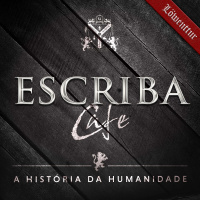Synopsis
The new home of the ABCs (Australia) popular astronomy podcast (formerly known as StarStuff). Recognized worldwide by our listeners and industry experts as one of the best programs on Astronomy and Space Science.
Episodes
-
Discovery of a Cosmic Ring of Fire
06/07/2020 Duration: 34min*Discovery of a cosmic ring of fireAstronomers have captured an image of a super-rare type of galaxy -- described as a “cosmic ring of fire”.https://spacetimewithstuartgary.tumblr.com/post/619166208183402496 *The black hole that generated lightAstronomers have for the first-time detected light coming from the merging of a pair of black holes. *A new name for an asteroid that’s about to be hit by a missileThe International Astronomical Union has approved an official name for a tiny asteroid moon set to become the first-ever target of an asteroid deflection mission. *The United States Space Force launches most accurate GPS satellite everThe United States Space Force has launched its newest and most accurate global positioning system navigation satellite.https://spacetimewithstuartgary.tumblr.com/post/622496466391416832 *The Science ReportOne in seven kids who develop Kawasaki-like COVID-19 syndrome develop nerve and brain problems.Koala populations will be extinct in New South Wales by 2050.Scientists build t
-
Pluto’s Liquid Ocean
03/07/2020 Duration: 33min*Pluto’s liquid oceanAstronomers say there’s growing evidence that Pluto and other large Kuiper belt objects started out with liquid oceans which have slowly frozen over. *NASA looking at a mission to NeptuneNASA is considering a mission to study the distant world of Triton -- one of the moons of the planet Neptune. *New study says there could be dozens of intelligent alien civilizations out there – or maybe notIt’s one of the ultimate questions -- Is there anyone out there – or are we alone in the universe? New guesstimates suggest there could be around three dozen intelligent alien civilizations spread around the Milky Way galaxy. *The Science ReportOne out of every eight animal and plant species heading for extinction.Differences in brainstem might explain variations in attention in people with autism.The first dinosaurs to walk the planet probably laid soft-shelled eggs.A new study claims older planets have a better chance of supporting life.COVID-19 conspiracy theories reach overdrive. For more SpaceTime
-
Exploring the Mysteries at the Edge of the Solar System
01/07/2020 Duration: 26min*Exploring the mysteries at the edge of the solar systemNASA’s IBEX spacecraft has confirmed the Sun’s heliosphere is shaped like a giant comet.https://spacetimewithstuartgary.tumblr.com/post/621539151474507776*The lifespan of NeutronsA new mission to Venus could finally determine the life span of the neutron.*ESA’s mission to study the Earth’s hydrological cycleThe European Space Agency Soil Moisture and Ocean Salinity or SMOS satellite has now been in orbit for more than a decade studying Earth’s water cycle and climate.*China completes its military satellite navigation systemChina has launched the final satellite in its Beidou military navigation system.*The Science ReportSummer sea ice in the Weddell Sea area of Antarctica drops by one million square kilometres.Record breaking heatwave conditions cooking the usually frozen wastes of Siberia.What could be Australia’s biggest meat-eating dinosaur.New research brings suspended animation a step closer.For more SpaceTime visit www.spacetimewithstuartgary.com
-
Ancient Milky Way Eruption Still Shines Bright
29/06/2020 Duration: 26min*Ancient eruption at the heart of the Milky Way still shines bright millions of years laterAbout 3.5 million years ago, the supermassive black hole at the center of our Milky Way galaxy unleashed an enormous burst of energy, lighting up the surrounding space. *OSIRIS-Rex asteroid sample collection set for October 20NASA has set October 20 as the date when the OSIRIS-Rex spacecraft will manoeuvre down to the rugged boulder strewn surface of the asteroid Bennu and attempt to collect a sample of the ancient space rock for return to Earth. *Annular solar eclipse sweeps across Africa and AsiaPeople across parts of Africa, Asia and the Pacific have been treated to a spectacular annular solar eclipse timed to coincide with the June solstice. *China launches more spy satellitesChina is continuing its push to launch a massive fleet of spy satellites designed to provide continuous coverage of the Earth’s surface. The latest flight takes Beijing’s current constellation of Earth observation satellites to over 90. *The S
-
New Hints of Hypothetical Axion Particles
26/06/2020 Duration: 25min*New hints of hypothetical axion particlesScientists from the international XENON collaboration has come up with some exciting results that just might be opening a new window on a hypothetical particle called the axion that’s been linked to dark matter. *Solar Orbiter makes first close approach to the SunESA’s Solar Orbiter spacecraft has undertaken its first close approach to the Sun reaching a comfortable 77 million kilometres from the visible solar surface. *NASA’s new water hunting Lunar roverNASA is developing a water seeking robotic lunar rover which could be exploring the Moon’s south pole in three years. The Volatiles Investigating Polar Exploration Rover – or VIPER -- will help pave the way for the return of humans to the lunar surface in 2024 aboard the Artemis 3 mission. *The Science ReportOne in five people at risk of severe COVID-19 infection.The COVID-19 lockdown changes human sleeping habits in North America and EuropeChina’s People’s Liberation Army Unit 61398 behind a major cyber-attack targe
-
Serious Questions Continue
24/06/2020 Duration: 36min*Serious questions continue over sciences understanding of cosmic historyIt’s becoming increasingly clear that scientists will need to rethink their understanding of the fundamental history of the Universe. A new set of precision distance measurements reported in the Astrophysical Journal Letters have reinforced discrepancies in two competing values for the Hubble constant which describes the expansion rate of the universe. *Pilbara meteor lights up early morning outback skiesWell, despite what you may have heard elsewhere, the bright green fireball which streaked across the remote Pilbara skies last weekend was not space junk or the giant asteroid 2002 NN4 – it was just a small meteor -- and it didn’t fall to Earth -- but rather grazed the upper atmosphere before continuing on its journey through interplanetary space. *SpaceX keeping a busy launch scheduleSpaceX has been maintaining a busy space launch schedule with another Falcon 9 rocket successfully lifting off with another 58 Starlink internet communica
-
The Need to Weaponize Space
22/06/2020 Duration: 30min*The need to weaponize space The United States found the need to create a separate defence arm for the space warfare arena last year – in order to meet the growing threat posed by existing Russian and Chinese space forces which have already weaponized space. The new branch will defend American space assets including communications, navigation, Intelligence, Surveillance and Reconnaissance satellites. And with Australia having contributed significant funding towards some of these spacecraft, as well its on going ground support role – comes the obvious question -- should Australia have its own space force within the ADF. *Evidence of recent volcanic eruptions on TitanAstronomers studying data from NASA’s Cassini mission to explore the ringed world of Saturn and its many moons have found evidence of recent volcanic activity on Titan. *Rocket Lab launches its 12th missionAn electron rocket has successfully blasted into space carrying five satellites into orbit.The payloads included three classified satellites fo
-
First Stars Began Shining Earlier Than Thought
19/06/2020 Duration: 36min*First stars began shining earlier than thoughtA new study using some of the deepest images ever taken by NASA’s Hubble Space Telescope suggests the first stars in the universe began to shine far earlier than previously thought.https://spacetimewithstuartgary.tumblr.com/post/620269228147245056 https://spacetimewithstuartgary.tumblr.com/post/620269364009189376 https://spacetimewithstuartgary.tumblr.com/post/620269506080784384 *Planet Nine may not existA new study suggests that the long sort after planet 9 may not exist after all. Astronomers first hypothesised the existence of a mysterious planet 9 in 2016 after observing the strange elongated orbits for 13 distant Kuiper Belt objects. *Solar Orbiter passes through the tail of the Comet Atlas ESA’s Solar Orbiter has passed through the tail if the remains of Comet ATLAS. The recently launched spacecraft was not meant to be taking science data so soon. *The Science ReportScientists discover a part of the Earth that’s still pristine and unchanged by humans.The
-
Probing the Mysteries of the Galaxy’s Fascinating Fermi Bubbles
17/06/2020 Duration: 28min*Probing the mysteries of the galaxy’s fascinating Fermi BubblesAstronomers have studied the Milky Way galaxy’s mysterious Fermi Bubbles in visible light for the first time. *NASA’s new Lunar Gateway space stationNASA has finalized its contract for the crew module of its new Gateway lunar orbiting Space Station. *Work begins on the Artemis 3 service module to take humans back to the lunar surface.Work is about to get underway on the European Space Agency Service module that will power the Orion spacecraft to carry the first astronauts to walk on the Moon in more than 50 years. *SpaceX launches another 60 Starlink satellitesSpaceX has launched another 60 Starlink internet satellites bring the total to 482. *The Science ReportPatients with COVID-19 who undergo surgery have a higher risk of complications and death.Gay, lesbian or bisexual people tend to show different personality traits to straights.Big theropod dinosaurs ate pretty much everything--including each other.Scientists well on the way to inventing an
-
Discovery of a Twinkling Heart to the Milky Way Galaxy
15/06/2020 Duration: 34min*Discovery of a twinkling heart to the Milky Way GalaxyAstronomers have detected twinkling radio emissions from the inner edge of the accretion disk around Sagittarius A* -- the supermassive black hole at the centre of our Milky Way Galaxy. *Zooming in on Fast Radio BurstsAstronomers are slowly uncovering more of the secrets of mysterious cosmic explosions known as Fast Radio Bursts. *Skywatchers get a penumbral lunar eclipse and annular solar eclipseSky Watchers have been treated to a penumbral lunar eclipse – which appropriately happened to be the traditional strawberry Moon marking the start of Strawberry season. *The Science ReportThe Lancet forced to retract its paper on hydroxychloroquine.Carbon dioxide levels are now higher than they’ve been for the past 23 million years.The earliest known use of a bow and arrow outside Africa.In an emergency dogs really do want to save your life – if they know-how. For more SpaceTime visit www.spacetimewithstuartgary.com (mobile friendly). For enhanced Show Notes in
-
Discovery of a Young Nearby Brown Dwarf Possibly Forming Planets
12/06/2020 Duration: 38min*Discovery of a young nearby Brown Dwarf possibly forming planetsAstronomers have discovered a brown dwarf with the protoplanetary disk system – which could potentially form planets. *SpaceX’s Starship prototype destroyed in massive explosionSpaceX’s Starship SN4 test article has exploded in spectacular fashion erupting in a massive fireball on its South Texas test stand. *Russia developing a new commercial launch systemThe Russian Federal Space Agency Roscosmos says it’s working on a new more economical version of its venerable Soyuz launch system to better compete in the growing global satellite launch market. *June SkywatchThe June solstice, an annular eclipse, and the Taurids meteor shower are highlights of the night skies in June. For more SpaceTime visit www.bitesz.com/spacetime (mobile friendly). For more SpaceTime visit www.spacetimewithstuartgary.com (mobile friendly). For enhanced Show Notes including photos to accompany this episode, visit: http://www.bitesz.com/spacetimeshownotesGet immediate
-
New Type of cosmic explosion New type of cosmic explosion
10/06/2020 Duration: 32min*New type of cosmic explosion Astronomers have discovered two new events similar to a strange inexplicable explosion which mysteriously blasted across the cosmos in 2018. *Galactic collision may have triggered our solar system’s birthThe formation of the Sun, the Solar System and the subsequent emergence of life on Earth may be a consequence of a cosmic collision between our Milky Way Galaxy and a smaller satellite galaxy known as Sagittarius Dwarf. *Europe's Spaceport back to businessThe European Space Agency’s Kourou Space Port in French Guiana is beginning to get back to work following the Covid-19 coronavirus lock down. *Beijing launches two more spy satellitesChina is further increasing the already vast number of military spy satellites it now operates – launching a further two into orbit.*The Science ReportHow to stop COVID-19 spreading between family members.Iran’s cyber-attacks designed to prevent developing a vaccine against the COVID-19 corona virus.Climate change to make more intense droughts -- m
-
Confirmation of a Second Planet Orbiting Proxima Centauri
08/06/2020 Duration: 38min*Confirmation of a second planet orbiting Proxima CentauriAstronomers have confirmed a second exo-planet orbiting around the nearest star to the Earth other than the Sun. *Discovering the universe’s missing matterAstronomers using mysterious explosions in the distant cosmos known as Fast Radio Bursts have solved a decades old riddle about the universe’s missing matter. *New type of matter inside neutron starsA new study suggests neutron stars may contain an exotic substance known as quark matter. *China ramps up its 2020 launch scheduleChina is maintaining its busy launch schedule with another pair of observation satellites flown into orbit aboard Beijing’s Long March 2D workhorse. *The Science ReportHalf of all people who contract the COVID-19 Corona virus show no symptoms of the illness.More than 500 vertebrate species now on the brink of extinction.What could be the earliest known land animal?A bit of good news for the follically challenged.Using science to change the minds of people who don’t trust scienc
-
Earth’s Magnetic Field Continues to Weaken
05/06/2020 Duration: 28min*Earth’s magnetic field continues to weakenA new study shows that the Earth’s magnetic field is continuing to weaken around the South Atlantic Anomaly – an area stretching from Africa to South America – which some scientists speculate could signify the start of a flip in Earth’s polarity.*New results raising more questions about the foundations of the cosmos Scientists analysing data from particle collisions have been getting strange results which seem to be pointing to mysterious new physics.*Chinese Internet of Things satellites placed in orbitChina has successfully launched a pair of Internet of Things communications satellites.*The Dobsonian TelescopeDobsonian telescopes are a type of altazimuth-mounted Newtonian telescope design, popularised by John Dobson and designed to get as much light into your telescope as possible for the least cost.*The Science ReportGrowing fears that COVID-19 could be transmitted through the eyes.New evidence show that parts of the Eastern Highlands of Victoria are still growin
-
The Brightest Explosions in the Universe
03/06/2020 Duration: 26min*The brightest explosions in the universeMystery still surrounds events known as superluminous supernovae -- which are the brightest explosions in the universe.*The mysterious X-37B Space Shuttle launches on another classified missionThe United States Space Force has launched one of its mysterious X-37 B space shuttles on another classified orbital mission.*Virgin Orbit crash and burns on its maiden flightVirgin Orbit’s new LauncherOne rocket launch system has a failure during its maiden flight.*The Science ReportUnsuccessful trials for a new HIV-AIDS based combination treatment for COVID-19.Reducing weight regain in patients after gastric bypass surgery.Radiocarbon dating – long used to determine the precise age of ancient artifacts – is being recalibrated.Why it’s so hard to wake up and get out of bed on a cold winter's morning. For more SpaceTime visit www.spacetimewithstuartgary.com (mobile friendly). For enhanced Show Notes including photos to accompany this episode, visit: http://www.bitesz.com/spacet
-
American’s Fly into Space from American Soil For the First Time in Nine Years
01/06/2020 Duration: 41min*American’s fly into space from American soil for the first time in nine yearsThe SpaceX Demo two mission successfully blasted off from Space Launch Complex 39A at the Kennedy Space Centre at in the Cape Canaveral Air Force Base in Florida. NASA astronauts Robert Behnken and Douglas Hurley were aboard the Crew Dragon two capsule for the historic Demo-2 mission atop a Falcon 9 rocket which successfully docked with the International Space Station 19 hours after lift-off.*Astrobiologists put the technology of the new Mars rover to the testNASA is slated to launch its Mars 2020 Perseverance Rover next month on a mission to search for signs of life on the red planet.*Japan says farewell to its faithful old H2 rocketThe end of an era as Japan launches a cargo ship carrying four tonnes of supplies for the International Space Station using an H2 rocket for the last time.*The Science ReportStudies show chloroquine and hydroxychloroquine offer no benefit for patients with COVID-19.Satellite data shows climate change is
-
Comet Swan Swoops Past Earth
29/05/2020 Duration: 31min*Comet Swan swoops past EarthIt seems to be the case of another month means another new comet as C/2020 F8 Swan is currently making its closest approach to Earth passing some 85 million kilometres away.*The Jovian ice moon Europa reveals new detailsNew high-resolution images of the Jovian ice moon Europa are providing scientists with fresh clues about how its frozen surface formed.*The Mercury TelescopeIndia is building a new telescope – with a difference instead of the traditional polished glass primary mirror -- this observatory will use spinning liquid mercury as the reflecting surface.*Kremlin launches top-secret Tundra military satelliteRussian military forces have launched one of their most highly classified spy satellites.The EKS Tundra early warning surveillance satellite was launched aboard a Soyuz 2.1b rocket from the Plesetsk Cosmodrome 800 kilometres north of Moscow.*The Science ReportItalian study shows a Kawasaki like disease increasing in kids with COVID-19.880,000 people who don't smoke die pr
-
Queensland Company Wins Australian Orbital Rocket Contract
27/05/2020 Duration: 25min*Queensland company wins Australian orbital rocket contractThe Australian Department of Defence Science and Technology has awarded Queensland-based Gilmour Space a contract to develop a new orbital rocket launch system.*WFIRST Dark Energy Telescope renamed after Nancy Grace RomanNASA has formally named its Wide Field Infrared Survey Telescope – WFIRST -- in honour of the agency’s first chief astronomer Nancy Grace Roman, who paved the way for space telescopes like Hubble to observe the universe from orbit – above the effects of Earth’s atmosphere.https://spacetimewithstuartgary.tumblr.com/post/618688707026911232https://spacetimewithstuartgary.tumblr.com/post/618688812177096704https://spacetimewithstuartgary.tumblr.com/post/187935263898*Lunar tee peeThe European Space Agency has developed a new use for urine as a superplasticiser for making a robust type of concrete on the Moon.*The Science ReportAutopsies of patients who died of COVID-19 show the virus is present in multiple organs.New study shows COVID-19 ca
-
Scientists Create a New Type of Atom
25/05/2020 Duration: 31min*Scientists create a new type of atomPhysicists have created a new never before seen exotic atom called Pionic Helium. Researchers created the particle to study the properties of a subatomic particle called a meson.*The Sun is less active than most starsA new study has found the Sun is at least five times less active than other similar stars. A report in the journal Science based on an analysis of 369 Sun-like stars shows that solar brightness variations are extremely weak – just 0.07 percent -- compared to other stars.*Elongating blobs of molten metals causing Earth’s magnetic north to moveNew data suggests a pair of giant elongating magnetic blobs deep below the Earth’s surface are causing the planet’s north magnetic pole to move at an ever-increasing rate from its current position in the Canadian arctic towards Siberia.https://spacetimewithstuartgary.tumblr.com/post/618359342940487680*The Science ReportThere have been positive early results from a phase 1 clinical trial of Moderna’s Covid-19 vaccine.Curren
-
Stunning New Images from the Surface of Asteroid Ryugu
22/05/2020 Duration: 25minSpaceTime with Stuart Gary Series 23 Episode 49*Stunning new images from the surface of the asteroid RyuguAstronomers have released amazing new close up high-resolution images and video of the surface of the asteroid Ryugu.*Claims an extraterrestrial protein has been discoveredScientists have found what they think could be the first known extraterrestrial protein discovered inside a meteorite.*Gas giants do form differently to brown dwarfsA new study claims gas giant exoplanets located at the outer edges of their planetary systems are formed in a different way to brown dwarfs.*A Russian rocket suddenly breaks up in orbit – and no one’s really sure whyThe Russian Federal Space Agency Roscosmos says one of its rockets has suddenly broken up in orbit above the Indian Ocean.*The Science ReportCOVID-19 virus can be present in the semen of patients with the illness.Temperature and latitude do not appear to be associated with the spread of COVID-19.Iran carrying out cyber-attacks against the company making the COVID

































